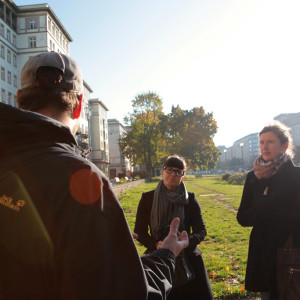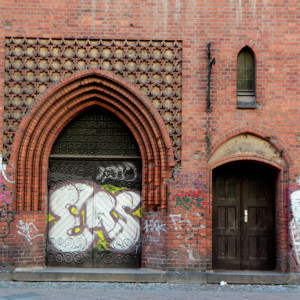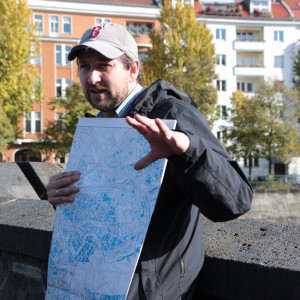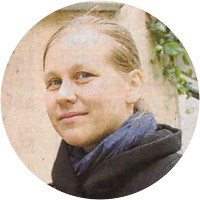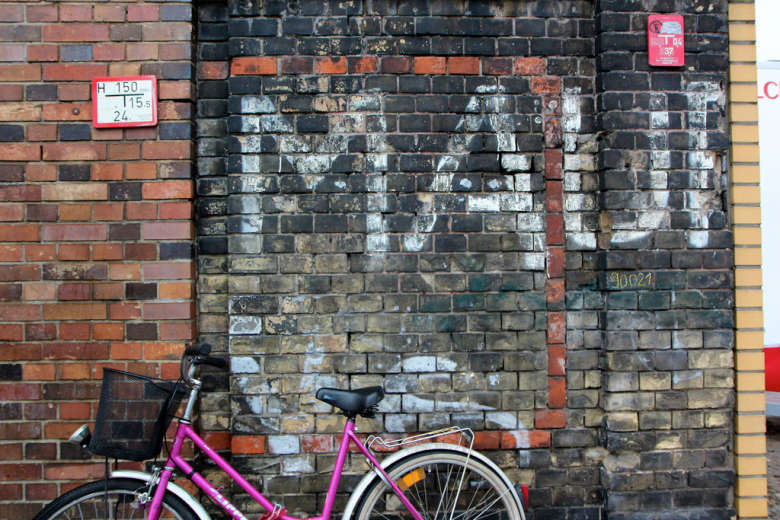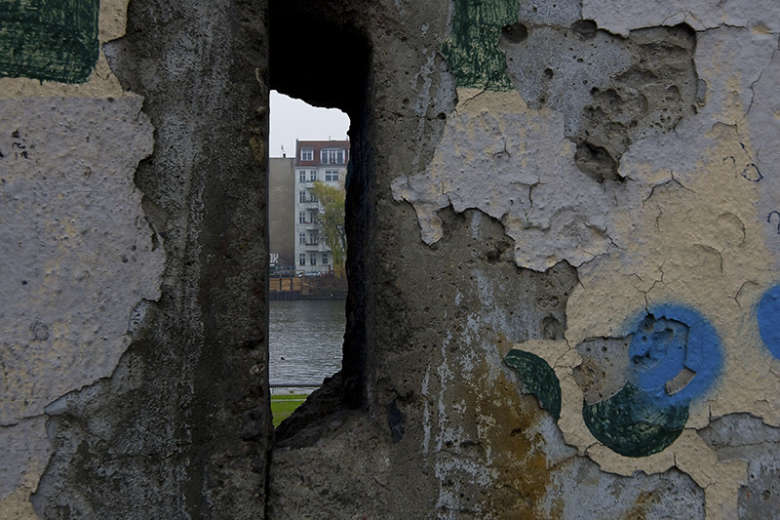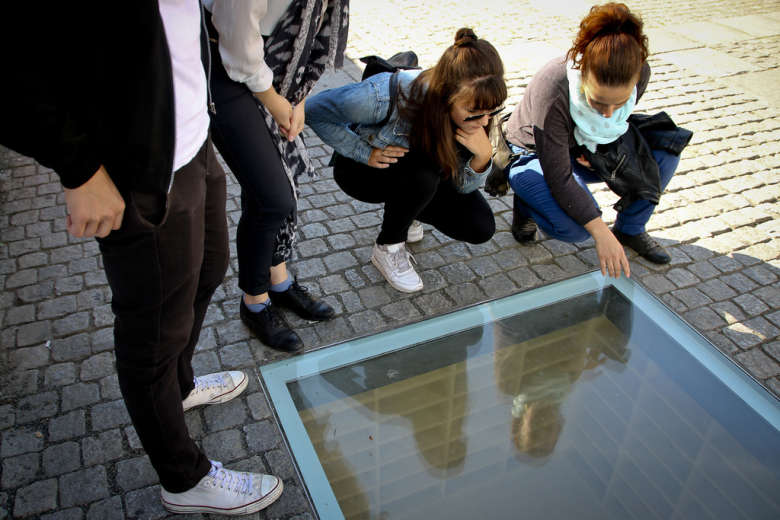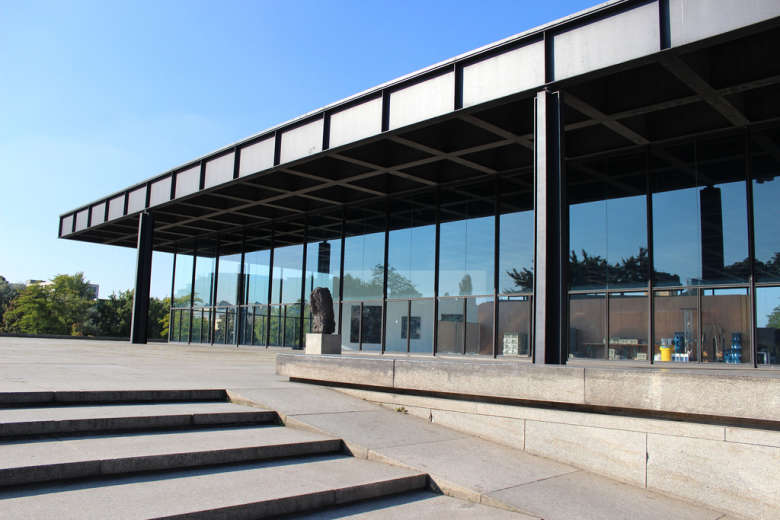Tour Details
Duration
3 hours
Product Type
Tour
Venues
- Karl-Marx-Allee
- Hansa Quarter
Select a date
Tour Description
As Europe began to rebuild following the wreckage of the Second World War, Berlin was instead cleaved in two: East Berlin, under Soviet control, and West Berlin, an “island of democracy” deep inside East German territory. On this 3-hour Berlin Cold War tour, we will join a local architectural historian for an in-depth comparison of East and West. We'll focus mainly on buildings and landscapes to build a compelling picture of a divided city and fractured years.
A Model Project of Soviet Architecture
We begin our walking tour on the east side of the city, at Frankfurter Tor on Karl-Marx-Allee. A striking example of Berlin's boulevards, this avenue reminds us that part of the history of the two Berlins is recorded in the naming and renaming of streets and sites. Stalinallee’s immense boulevard was the primary focus of East Germany’s post-war development project, attempting to reorganize Berlin’s urban landscape and stressing the political and visual importance of the city center. In the shadows of the Frankfurter Tor’s twin towers, we will discuss the 1950 decision by communist East German leadership to do away with the “cosmopolitan fantasies” of modernist, decentralized planning and to create instead a monumental architecture capable of embodying the promise of a new socialist society.
"The tour was fascinating. [Our guide] was very well informed and told interesting stories about Berlin during and after the Cold War. We came away with a whole new view of the city."
The West’s Response: Democracy and Commerce
After uncovering the layers of meaning in the architecture of the former East, we will hop on Berlin’s historic S-Bahn train line and cross to the West. Here, we will explore West Berlin’s response to the communist model of Stalinallee: the reconstructed Hansa Quarter.
In this neighborhood, in ruins since the Second World War, a host of internationally prominent architects designed a series of individual, overtly modernist buildings scattered across the green, park-like area. We'll discuss how the spaces and structures embody Western principles of freedom, individuality, and the non-authoritarian order of democracy and the marketplace.
Berlin Cold War Tour
By the end of our time together, we will have investigated how architecture and urban planning in Berlin were one of the main fronts in the political and ideological struggle of the Cold War. We'll also be newly equipped with an insightful perspective that will transform the way we see the city thereafter.
Experts
Where You'll Start
–
84 Reviews
Reviews can only be left by Context customers after they have completed a tour. For more information about our reviews, please see our FAQ.
What worked: focus on the architecture of East vs. West. Our travel companions were thoroughly enchanted with the 'stories behind' the buildings of Berlin, and Anne provided just enough color and anecdotes to really make these large historical movements "come alive" for us.
Also worked: Anne's breadth and depth of knowledge about Berlin in general, but our tour-route specifically. One of our party is a naturally inquisitive person and really kept peppering Anne with questions. She handled each with grace and aplomb, and somehow never broke stride! Very impressive.
Also appreciated: a pass by the Berlin Wall memorial. I don't believe it was intended to be part of the tour that day, but we detoured through anyway and I really appreciated the additional stop.
What didn't: one small gripe — Anne is fairly soft-spoken and a couple of times (particularly when walking near busy thoroughfares) it was hard for me to hear her completely. A little more 'pause, turn and project' would have helped in these loud contexts.
Bryce
Reviewed on:
Mar 28, 2012
What made this walk for us was the insights of Chris having grown up in the east before the wall came down. Fascinating perspective and very open with her experiences. Really enjoyed the first half on Karl Marx Strasse. 2nd half seemed more to be just a comparative architecture study looking at examples of Bauhaus structures in the west. Would have preferred to spend more time in the east trying to understand what life was like under communist rule.
Robert
Reviewed on:
Jul 22, 2011
Chris' background as an east berliner who was 11 when the wall fell gave a truly different perespective from anything we heard/saw elsewhere and highlighted the enormous bias the victors have when recording history. The tour itself was also clever and accessible, contrasting the actual building constructed in the postwar period on the two sides of the wall.
Aaron
Reviewed on:
Jul 16, 2011


